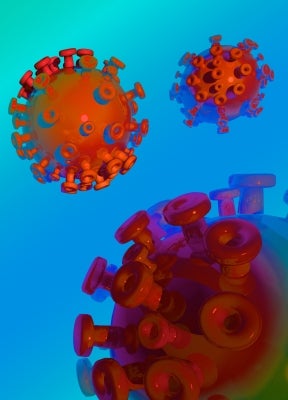
A new strain of Salmonella which is resistant to chloramphenicol, a frontline antibiotic in the treatment of the disease, has been made more powerful by the HIV epidemic in Africa, a team of international researchers suggests.
The scientists found that non-Typhoidal Salmonella (iNTS), caused by new bacteria Salmonella Typhimurium, is able to kill one in four sub-Saharan people who catch it. Yet, in the rest of the world, the disease tends to be fatal in less than 1% of people infected.
They also found that one of the major contributing factors for the successful spread of iNTS was the acquisition of genes that afford resistance to several frontline drugs used to treat blood-borne infection.
Chinvere Okoro from the Wellcome Trust Sanger Institute in the UK said a weak immune system caused by HIV and malaria may provide a population in sub-Saharan Africa that is large enough for the bacteria to circulate and thrive.
“We used whole genome sequencing to define a novel lineage of Salmonella Typhimurium that is causing a previously unrecognised epidemic across the region. Its genetic makeup is evolving into a more typhoid like bacteria, able to efficiently spread around the human body,” said Okoro.
In a study, published in Nature Genetics, the team created a ‘family tree’ depicting the pathogen’s evolution by analysing the genetic code of 179 batches of Salmonella from different parts of Africa and the rest of the world.
How well do you really know your competitors?
Access the most comprehensive Company Profiles on the market, powered by GlobalData. Save hours of research. Gain competitive edge.

Thank you!
Your download email will arrive shortly
Not ready to buy yet? Download a free sample
We are confident about the unique quality of our Company Profiles. However, we want you to make the most beneficial decision for your business, so we offer a free sample that you can download by submitting the below form
By GlobalDataThey found that iNTS spread in two waves. The first wave emerged in the south-eastern hub about 52 years ago and the second in the Congo Basin about 35 years ago.
The majority of samples from the second wave contain a gene that makes them resistant to chloramphenicol, which was not present in the first wave.
The HIV epidemic in sub-Saharan Africa is thought to have begun in a central region and underwent expansion eastwards, a similar dynamic to that observed for the second iNTS wave.
Lead author from the Wellcome Trust Sanger Institute Gordon Dougan said, “Because it acquired resistance to chloramphenicol, this pathogen has much greater opportunity to survive and spread across the region.”
“This is the first time that the power of whole-genome sequencing has been used to track the spread of iNTS. Our research highlights the power this approach has to monitor the emergence and spread of dangerous pathogens both locally and globally over time.”
Image: Non-Typhoidal Salmonella is more severe in sub-Saharan Africa than the rest of the world because of factors such as malnutrition or HIV (virus pictured). Photo courtesy of FreeDigitalPhotos.net.



